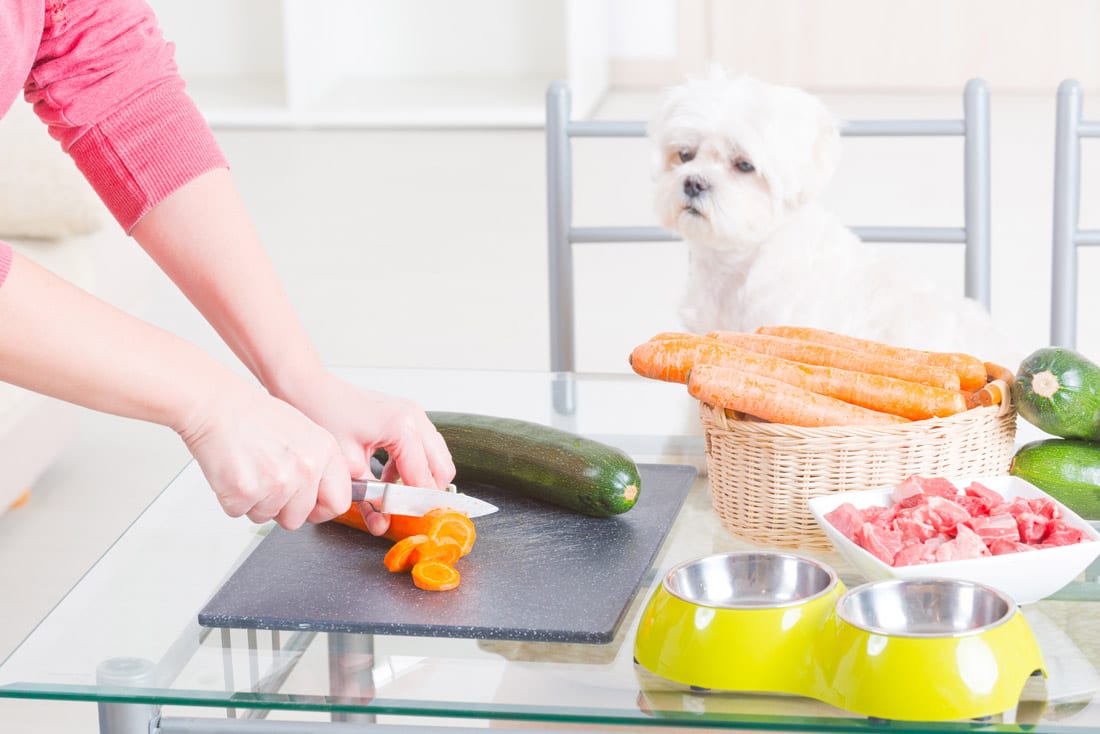HOMEMADE PET FOOD IS A GROWING TREND, AND WE’VE GOT TIPS FOR SERVING IT UP RIGHT
STORY: Laura J. Moss
Nearly all pet owners—95 percent, to be exact—consider their pets to be part of the family, according to a recent Harris Poll. And with the number of pet food recalls these days and our desire to ensure that our pets aren’t only consuming nutritious food but also high-quality ingredients, it’s not surprising that more and more owners are actually cooking for their four-legged family members.
While some people may bake the occasional treat for their treasured furry friend, other owners are forgoing the kibble entirely and preparing all of their pets’ food at home.
“My dog is obsessed with human food despite years of trying to train him out of it,” says Lydia Benitez, a Sandy Springs high school teacher who has a 3-year-old dog named Oliver. “I started making his food as an experiment to see if it would calm down his begging habits and also because he was clearly frustrated with eating dry food every day.”
Benitez got the idea to prepare her pup’s food from a friend’s mother, who provided her with a dog food recipe that contains chicken, vegetables and barley. And Oliver loves it. “[It] makes his life a little more pleasurable,” says Benitez.
Think your canine companion or feline friend would enjoy a little home cooking? First, talk to your veterinarian to discuss your pet’s nutritional needs, as well as what supplements your pet may need to take while on a homemade diet.
“I believe that fresh food is better for dogs and cats,” says Dr. Susan Wynn, a board-certified veterinary nutritionist who practices at BluePearl Pet Hospital in Sandy Springs. “However, if the diet is not overall complete and balanced, it instead becomes a liability, and processed complete and balanced foods are better.”
If you choose to make your pet’s food, keep in mind that while the Internet is home to countless recipes, not all of them are created equal. In fact, a 2013 study by the University of California, Davis, School of Veterinary Medicine tested 200 recipes, many of which were written by vets, and found they were short on essential nutrients.
Once you select an appropriate recipe, follow the instructions carefully, being especially meticulous with meat preparation to kill any bacteria. And while you may be accustomed to substituting ingredients while cooking or baking for your family, don’t do the same when cooking for your pet, as you could easily change the recipe’s nutritional value or unintentionally add or subtract calories.
If whipping up meals for Fluffy or Fido is an extra step you’re not prepared to make, Wynn notes that pet owners can certainly find nutritional foods at their local pet stores. “High-quality, super-premium processed foods contain plenty of quality protein,” she says. “What pets are missing are the antioxidants from fresh veggies and fruits. These should be added to the food and used as treats as much as possible.”
Writer and pet columnist at Simply Buckhead. Author, AdventureCats.org founder, total cat lady.













